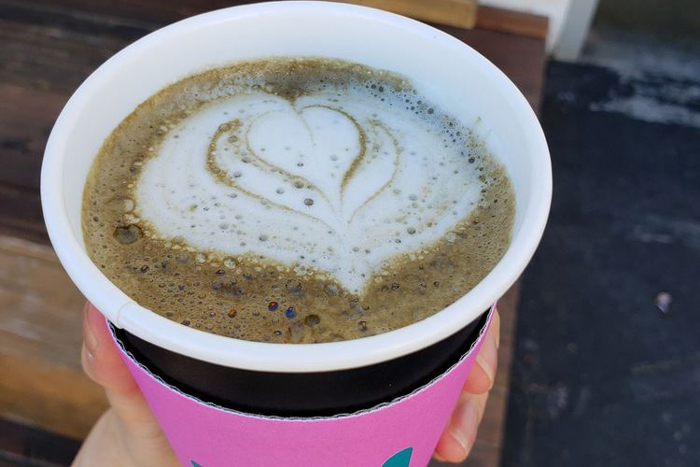 Feature Image by Jina C. via Yelp
Feature Image by Jina C. via Yelp
There’s a solid chance you’re familiar with matcha, easily recognized for its bright green pigment that comes from green tea leaves. But what about hojicha? Ahead, we break down everything you need to know regarding the similarities and differences between the powdered Japanese green teas.
What is hojicha?
Like matcha, hojicha (pronounced: how-jee-chuh) is a type of Japanese green tea that people love in lattes and as an after-dinner tea. It’s roasted rather than stone-ground, which turns the tea leaves from green to a reddish-brown color.
What are the differences between hojicha and matcha?
Preparation. The key difference between matcha and hojicha is that matcha only exists as a powder, made by grinding Tencha green tea leaves. Hojicha, on the other hand, can either take the form of loose-leaf tea or be stone-ground into powder, and it comes from green tea leaves and stems.
Caffeine content. Matcha is comparable to coffee in terms of its high caffeine content (around 70 mg of caffeine per eight-ounce cup). In contrast, hojicha is low (usually less than 10 mg per cup), making it an excellent option for the evening when you’re looking to wind down rather than get amped up.
Taste. While matcha can be bitter, hojicha isn’t thanks to its roasting process. Drinkers describe it as nutty, smoky, and sweet.
What are the benefits of hojicha?
Relieves stress. Green tea contains L-Theanine, which is known to help ease anxiety.
Free radical protection. Hojicha contains tons of antioxidants that protect against free radicals in the body.
Metabolism booster. Roasted green tea is said to help speed up the body’s metabolism and promote blood circulation.
Where can you purchase hojicha?
We love this one from Ippodo Tea or this one from Hojicha Co., which is crafted in Kyoto.
xx, The FabFitFun Team




